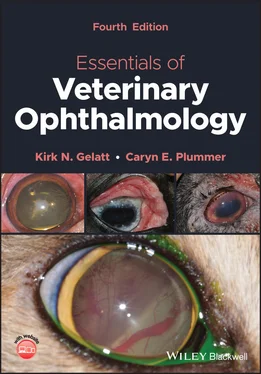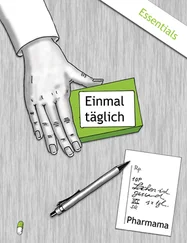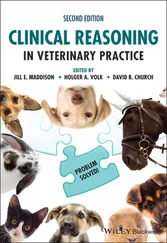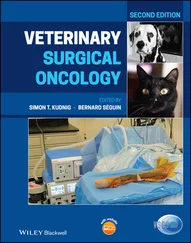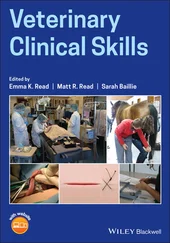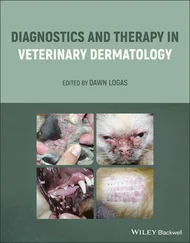In addition to its refractive role, the vitreous appears to have additional functions in the process of accommodation. In both humans and monkeys, imaging has revealed that the vitreous bows posteriorly as the ciliary body contracts. This movement is in proportion to the accommodative amplitude. The vitreous also plays an important role in ocular metabolism. It serves as a storage site for retinal metabolites, including glycogen, amino acids, and potassium. Retinal and lenticular waste products, including lactic acid and free radicals, are absorbed by the vitreous, which thus serves to protect the lens and retina from toxic compounds. In cattle, these molecules (and water) can diffuse across the vitreous through pores that are 400 nm in diameter. HA serves as a barrier to this diffusion process; therefore, molecule size and HA concentration are two of the primary factors affecting the diffusion of molecules through the vitreous. A decrease in HA concentration, which results in vitreous liquefaction, will thus lead to an increase in particle diffusion through the vitreous. Therefore, pathological or aging processes leading to a decreased HA concentration and vitreal liquefaction will affect the nutrient supply, waste removal, and drug delivery in the posterior segment of the eye.
The vitreous also provides some mechanical and structural support to the lens and retina. Furthermore, its viscoelastic properties protect the internal eye structures from trauma and stress, especially during rapid eye movement (REM). Concentrations of collagen and HA, as well as the nature of their cross‐links, contribute to this viscoelasticity. For example, in humans, the concentration of vitreal HA and collagen is twice as high as in the pig, and this corresponds to a 60% increase in the spring constant of human versus porcine vitreous. Woodpecker vitreous differs from human vitreous in that it does not have vitreoretinal attachments. This lack of coupling of the vitreous to the posterior pole, as well as the orientation of the eye with respect to the axis of striking, is thought to reduce relative shearing motions that would be expected to result in ocular trauma from the woodpecker's rapid acceleration–deceleration movements.
Higher‐resolution vision is subserved by a small section of the retina termed the area centralis in animals. Visual acuity and other parameters of vision (e.g., color perception) decrease rapidly in the more peripheral retina outside the area centralis. To keep an object of interest in the center of the visual field, so that its image will stimulate the area centralis (or fovea in birds and primates), vertebrates rely on the actions of six or seven EOMs. Domestic species have four rectus EOMs – dorsal (or superior), ventral (inferior), nasal (medial), and temporal (lateral) – all of which move the eye in those respective directions (see Chapter 1). The oculomotor nerve (CN III) innervates the dorsal, ventral, and medial rectus muscles, and the abducens nerve (CN VI) innervates the lateral rectus muscle. Two oblique muscles that work in conjunction with the rectus muscles are also present. The ventral oblique, which is innervated by the oculomotor nerve, rotates the ventral aspect of the eyeball both nasally and dorsally; the dorsal oblique, which is innervated by the trochlear nerve (CN IV), rotates the dorsal aspect of the eyeball both nasally and ventrally. These muscles keep vision horizontally level irrespective of eye position in the orbit. The retractor bulbi, which is present in most species other than primates and birds, is innervated by CN VI and pulls the globe deeper within the orbit. The EOMs contain both fast (~85%) and slow (~15%) fibers; however, in contrast to noncranial skeletal muscles, they exhibit both very fast contractility and extreme fatigue resistance. Even among the EOMs there is great variation in the composition of each muscle in regard to the myosin heavy chain isoforms that assist with the dynamic physiological properties and CNS control of eye movements. The EOMs are highly aerobic as well as resistant to injury and oxidative stress, with only cardiac muscle having a higher blood flow rate. Additionally, normal EOMs undergo myonuclear addition and subtraction throughout life while maintaining overall size and function, which is not observed in any other noncranial muscle. A motor axon innervates 5–10 muscle fibers in the extrinsic eye muscles, whereas thousands may be innervated by a single axon in skeletal muscles, thus allowing for finer control of eye muscles by the CNS.
The EOMs of the eyes of birds are generally similar to those of mammals, other than the lack of a retractor bulbi muscle. In addition, the rectus muscles are much less robust than in mammals. Globe shape varies considerably among avian species, but the globes are relatively large, such that the two eyes weigh nearly as much as the brain. The globe shape and tight fit within the orbit impede globe movement, thus leading to the less robust rectus muscles. Birds compensate for this restricted globe mobility through movement of upper body and neck muscles to obtain a spatial perspective on objects.
Simplistically, two fundamental laws govern eye movements. The first, formulated by Sherrington, states that antagonistic muscles (in the same eye) have reciprocal innervation. In other words, stimulation of an agonistic muscle (e.g., medial rectus) occurs concurrently with inhibition of the antagonistic muscle (e.g., lateral rectus) in the same eye. The second governs innervation of yoked muscle pairs (i.e., the two muscles responsible for moving both eyes in the same direction). In mammals, yoked muscle pairs are always equally innervated; therefore, a lateral movement of the left eye will be accompanied by an identical, medial movement of the right eye. Additionally, several EOM pulley systems have been hypothesized but not proven.
The seven EOMs are responsible for numerous types of eye movements. Saccadic eye movements are very rapid (up to 1000°/s) and very brief (<0.1 s). They are intended for fast correction of eye position to rapidly bring the image of interest onto the area centralis. Thus, saccadic movements are used mostly when tracking a fast‐moving object or to begin pursuit of a formerly stationary object.
Once the image of the object has been “captured” by the area centralis, smooth pursuit eye movements are used to match the speed of the object and to maintain its image in the area centralis. Required minor corrections and adjustments are, again, executed by saccadic movements. This combination of alternating rapid and slow eye movements is called optokinetic nystagmus (discussed later), which can be used to track objects moving at speeds <100° as well as the determination of visual acuity in nonvocal individuals and animals. Saccades and smooth pursuit constitute the two types of conjugate (or version) eye movements, in which the two eyes move together without changing the angle between them.
Vergence eye movements, in contrast, change the angle of intersection between the two eyes. These can be either convergent (i.e., increasing the angle between the visual axes to focus on a near target) or divergent (i.e., decreasing the angle between the visual axes to focus on a far target). Vergence movements are usually slow (<21°/s) and they have two roles. The first is to aid in visualizing nearby objects, which is a process that combines convergent eye movement, accommodation, and miosis. The second is to resolve any small misalignments between the two visual axes that otherwise might result in a disparity between the retinal images of the two eyes.
The afferent stimulus for all these eye movements is the visualized object. If the head is moving, however, eye movement is controlled by a different afferent limb, which allows for a faster tracking response. In this case, the stimulus is the acceleration of the head. Linear acceleration stimulates the otoliths of the vestibular apparatus, and angular acceleration stimulates the hair cells of the semicircular canals. These organs provide the afferent input for the vestibulo‐ocular reflex (VOR), the neuronal pathways of which are discussed in detail in Chapter 18. The reflex produces immediate, but slow, eye movements, which compensate for movement of the head and help stabilize the image on the area centralis. Thus, if the head moves up, the VOR moves the eyes down, and if the head moves to the left, the VOR moves the eyes to the right. It appears that the cat makes greater use of the VOR arc than the dog to follow moving objects. Comparison of the dog and cat when visually following a bouncing ball is most dramatic.
Читать дальше
